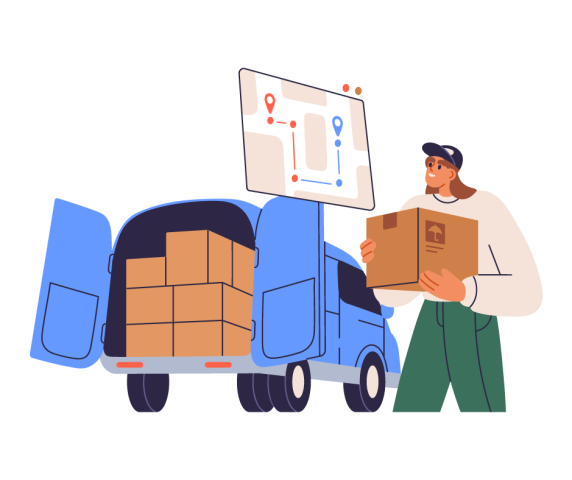- Laurie Wherley
- July 13, 2022
Warehouse staffing needs are almost as unpredictable as sales trends. Sometimes your best worker quits. Other times, a big shipment requires you to double your staff–by Tuesday.
To optimize warehouse staffing, managers should improve hiring through retention.
Let’s look at seven top tips for staffing a warehouse:
1. Plan for Turnover
Industries with hard, physical labor often have high turnover.
Warehouse work, like delivery and driving in the logistics sector, can take a physical toll. On average, younger workers don’t stay long and older warehouse workers retire early.
For warehouse managers, this means routinely finding new talent, even while resources are scarce. In turn, this can reduce focus on operations, which adds stress for current team members. Engagement and retention stuffer, and the cycle begins again.
While some turnover is unavoidable, you’ll see a big difference if you support your workers’:
- career development
- work-life balance
- manager relationships
- compensation
- mental and physical health
2. Provide Flexible Schedules
While the physicality of warehouse work is tough, so are long hours. Overnight workers with day jobs and/or family commitments can feel like long hours are a burden.
Scheduling flextime, shift work, and split shifts makes a difference. These options can attract better talent, retain happier workers, and reduce absences.
3. Find Good Team Players
Warehousing is about moving products efficiently. To be successful, new hires need to understand your systems and procedures, but they also need to fit in with your team.
To maintain output and reduce turnover, make sure you choose employees that share your company culture.
4. Don’t Ignore Your Competition
To job-seekers, big employers often signal stable employment and premium benefits, even if those don’t always pan out. When staying competitive means attracting and keeping new hires, warehouse managers have to stay aware.
Competitor pay rates, benefits, employee retention programs, etc. should drive your long-term strategy.
5. Watch for Employee Fatigue
Warehouses are large, and even the most diligent manager can’t see everything at once.
While work fatigue hits in every industry, it’s especially noticeable in warehousing. Signs to look for include:
- pick/pack numbers dropping
- packing errors increasing
- longtime employees doing only the bare minimum
Ensure your teams get adequate breaks. Treating employees well is great for them and great for business.
6. Be Transparent
Workers in any industry appreciate transparency. When you’re hiring, it’s essential to ensure both you and candidates can find a good match.
If the first interview goes well, consider swapping the second interview for something more modern. You can let candidates tag along for an hour with an existing employee or have casual chat over lunch. Your potential hire will be able to relax, and you’ll see how they fit in with your team.
If a candidate isn’t a good fit, let them know. This professionalism sets your reputation and will eventually help you reach higher-quality candidates.
Transparency also goes both ways. You can empower your staff and make them feel valued by asking their opinions–starting on day one.
7. Do Your Homework
Hiring is a two-way street, and you’re the ambassador representing your company. Review your candidate’s qualifications, ask informed questions, and be prepared to answer questions, too. People will want to know about benefits, schedule flexibility, and promotion opportunities. Answer promptly and honestly. They’ll find out soon enough anyway!











